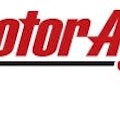Industry leaders join Reaction Design as it launches Model Fuels Consortium II
|
Reaction Design, a clean technology chemistry company, has announced the establishment of Model Fuels Consortium II (MFC-II). MFC-II is the second generation of a highly-regarded project for the development of cleaner burning, higher-mileage vehicles. “As the cost of engine fuels continues to rise and the need to meet tightening emissions specifications drives the need for more sophisticated design methods, close collaboration among fuel and auto industry leaders is essential. MFC-II provides a forum for this collaboration, enabling continued development of tools, fundamental combustion data and models that help solve fuel-efficiency and pollution-reduction challenges,” says Bernie Rosenthal, CEO of Reaction Design. The goal of MFC-II is to create software models and tools that let engine designers predict and control soot particle size and number. Nano-particles are increasingly being linked to various medical conditions from asthma to pulmonary fibrosis. New and proposed regulations would limit the number and size of these particles that an engine can produce. However, without proactive engine design changes, these regulations would significantly increase the cost of automotive after-treatment systems. "The ability to accurately simulate particulate emissions in a virtual environment has a significant impact on engine development cycles," says Shingeo Furuno, General Manager Power Train Engineering, Toyota Motor Corporation. "We expect the MFC-II will provide us with the necessary models and tools to predict the sooting tendencies of different combustion conditions. In the end, this can save weeks or months of development time versus using only physical prototype tests." Building on the surrogate modeling strategy of the original MFC, the new consortium effort will continue to expand the “members-only” combustion fuels database to refine precision and add new fuel types, as new trends require. This database provides the cornerstone intellectual property for accurate combustion simulation and soot prediction. With the growing importance of diesel fuels, further development of science-based soot models, with a special emphasis on particle size distribution, will be pursued. In addition, the mechanism-reduction techniques developed in the original project will be further enhanced to meet demands for faster, more precise model generation. "Working with the MFC-II gives us access to data and software tools that we can use to create new cleaner-burning fuels and respond to anticipated changes in transportation fuel requirements," says Garry Gunter, Senior Engineer, ConocoPhillips Company. "By uniting key players from the auto and energy industries, the MFC-II provides an important forum for clean-fuel development and analysis." Charter Members for the MFC-II include: Conoco-Phillips, Mazda, PSA Peugeot Citroën, Saudi-Aramco, Suzuki, and Toyota. In addition to the active contributions from these members, the MFC-II effort will continue to benefit from the active participation and guidance of a technical advisory committee including chief technical adviser, Charlie Westbrook, widely regarded as one of the pioneers of combustion modeling, together with Prof. Anthony Dean, Colorado School of Mines; Prof. William Green, MIT; Prof. Hiromitsu Ando, Fukui University; Prof. Mitsuo Koshi, University of Tokyo; Prof. Ulrich Maas, Karlsruhe University and Prof. Rolf Reitz, University of Wisconsin. For more information on the MFC-II, visit www.reactiondesign.com. |
About the Author
